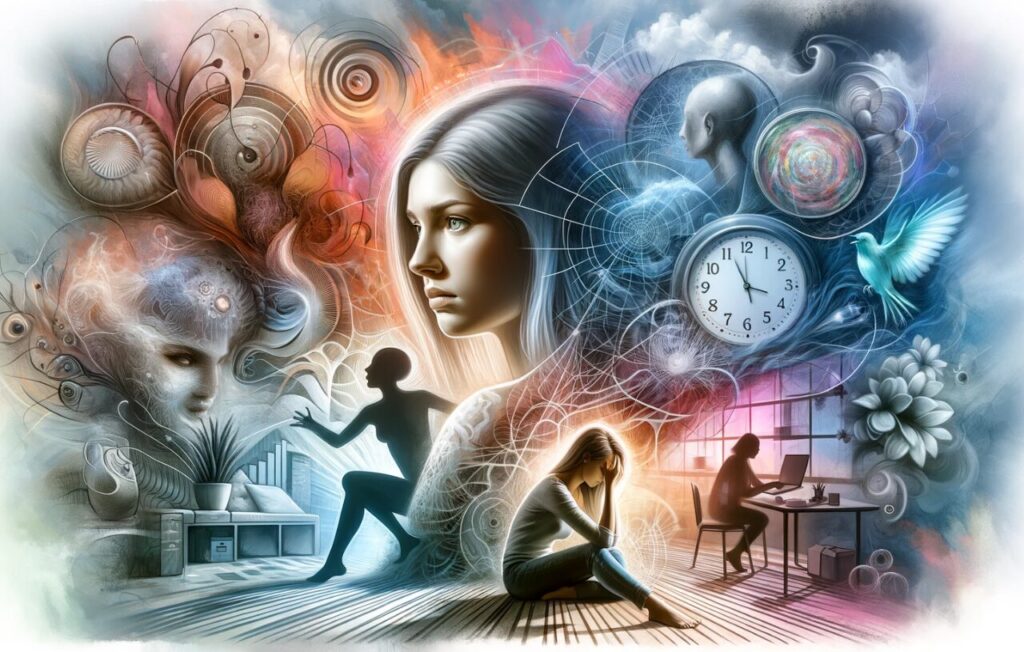Have you ever wondered if you need help with anxiety? Many people ask themselves this question every day. Below is information about anxiety, how it manifests, and how therapists, psychologists, and psychiatrists can help. We hope you find this information useful, but we also want to emphasize that the symptoms listed below do not tell the full story of someone’s struggles. At Restorative Psychological Services, we provide more than the necessary symptom relief. We help you identify, discuss, and address deeper psychological and emotional needs.
Anxiety
Anxiety is the most common mental health disorder in the United States. Approximately 40 million adults and 5.8 million children struggle with some form of anxiety. Anxiety can originate from a variety of factors. These factors include having a genetic predisposition (such as a family history), exposure to traumatic experiences (such as abuse, violence, or stress), and everyday stressors (such as work or school). Anxiety can cause impairment in social functioning, occupational functioning, and physical health. There are several different forms of anxiety that people may struggle with, and no individual may struggle in the same way.
Generalized Anxiety Disorder (GAD): GAD is characterized by intense and excessive worry and stress about a variety of issues and situations. It typically lasts longer than six months and involves feelings of restlessness and tension, difficulty concentrating and irritability, and changes in your appetite and sleep patterns. It affects approximately 6.8 million adults in the United States; however, less than half of those people receive treatment.
Social Anxiety Disorder (SAD): SAD is characterized by persistent fear of being watched or being scrutinized by others. Individuals may fear judgment or rejection from others based on how they may do things. This fear can affect work, school, and other activities and can make it challenging to sustain relationships and to gain new experiences. Approximately 15 million adults in the United States are living with this; however, most people start to experience symptoms around the age of 13.
Panic Disorder: Panic disorder is characterized by frequent and sudden attacks of panic or fear. Individuals may experience symptoms of shortness of breath, tightening of chest or muscles, or intense sweat. The onset of these attacks may occur when exposed to a triggering situation or experience. It affects approximately 6 million adults in the United States.
Obsessive-Compulsive Disorder (OCD): OCD has two main components: the experience of intrusive and unwanted thoughts or images (obsessions) and the need to engage in behaviors to minimize the distress from these thoughts or images (compulsions). It can be debilitating and time consuming. Approximately 2.5 million adults in the United States are living with OCD; however, most people begin to experience symptoms around the age of 19. About one third of all adults with OCD experience their first symptoms in childhood.
Post-Traumatic Stress Disorder (PTSD): PTSD develops in response to a threatening or terrifying situation, either by witnessing it or experiencing it. Individuals may experience symptoms that include flashbacks or memories, intrusive thoughts or images, and intense distress at reminders of the event. PTSD affects approximately 7.7 million adults in the United States. Childhood sexual abuse is the strongest predictor of developing PTSD.
There are many common myths about anxiety, such as “everybody has it, so it is no big deal,” “you are exaggerating your feelings about this,” and “anxiety is a problem mostly for adults.” However, these myths are not facts. Anxiety is extremely common, but it is a big deal for people who struggle with it. Anxiety affects millions of children and adults, and these numbers are only growing. Despite these facts, anxiety can be easily treated. There are several treatment options that may be helpful for you.
Psychotherapy: This option involves working with a therapist to better understand your anxiety, what factors may have led to and currently maintain it, and how to reduce symptoms and learn ways to cope with it. In treatment, you will learn the situations that trigger your anxiety, how to interpret your fears in more rational ways, and how to respond to your fears differently.
Stress Management and Coping Skills: The use of stress management techniques and strategies can improve symptoms related to anxiety. These techniques can include exercise, meditation, and relaxation. Through these skills, you learn cope with anxiety and stress, which will result in different behavioral and physical responses to anxiety. The use of these skills can also enhance the effectiveness of psychotherapy.
Medication: This involves meeting with a psychiatrist or physician to better understand how your symptoms impact functioning. There are many different medications that can potentially relieve symptoms of anxiety. Medication is also shown to be a helpful addition to psychotherapy.
For more information, please visit these resources:
American Psychiatric Association (2022). Diagnostic and statistical manual of mental disorders (5th ed., text rev.). https://doi.org/10.1176/appi.books.9780890425787
Anxiety & Depression Association of America (2023). Anxiety Disorders – Facts & Statistics. https://adaa.org/understanding-anxiety/facts-statistics
Centers for Disease Control and Prevention (April, 2022). Anxiety and depression in children: Get the facts. https://www.cdc.gov/childrensmentalhealth/features/anxiety-depression-children.html
Mayo Clinic (May, 2018). Anxiety disorders. https://www.mayoclinic.org/diseases-conditions/anxiety/diagnosis-treatment/drc-20350967
National Institute of Mental Health (April, 2022). Anxiety disorders.
https://www.nimh.nih.gov/health/topics/anxiety-disorders
Wilmer, M. T., Anderson, K., & Reynolds, M. (2021). Correlates of quality of life in anxiety disorders: Review of Recent Research, 23(7), 1-9. https://doi.org/10.1007/s11920-021-01290-4
